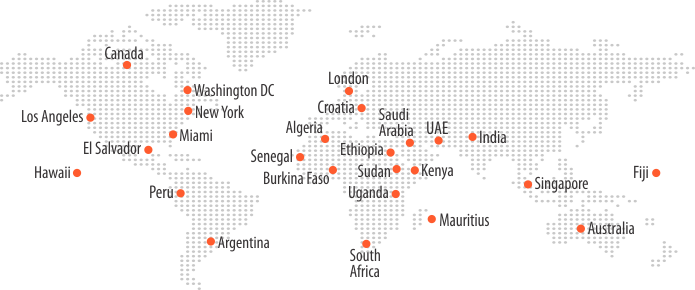The Ultimate Stand Against Telecom Frauds in 2022 and Beyond

Unfortunately, the variety of telecom fraud practices aiming to exploit networks and users has expanded along with the technologies underpinning smartphones. Telecom fraud is not new, but it has become more prevalent in recent years. It should come as no surprise that fraudsters are growing more adept at taking advantage of network operators and customers as fraudulent behavior in the telecom sector continue to wreak havoc on the sector and show no signs of slowing down.
Despite being a common occurrence, during the Covid-19 pandemic, fraudsters were capable of targeting providers and customers at an unprecedented rate. As per a report, 61% of operators indicated network security threats have increased or greatly increased since it started, and 75% of operators reported new or increasing instances of fraud.
Therefore, if industry providers are to handle the pervasive threat of fraud, they need a new and integrated strategy or a telecom fraud management solution and revenue assurance solution that protects consumers and enterprises.
Analyzing Vulnerabilities of Telecom Fraud
In order for telcos to know where their vulnerabilities are, businesses must start by converting reactionary actions into preventative ones. However, given that the sector experiences yearly losses of the order of billions due to fraudulent calls or scams, the severity of this problem cannot be underestimated. According to a recent analysis by the Communications Fraud Control Association (CFCA), 73% of the operators surveyed reported that global fraud losses have climbed or remained the same. In comparison, 66% claimed that fraud had drifted up or remained the same within their organization. Telecom companies must consequently obtain better insight into fraud management strategies as fraudsters become more adept at what they do and develop their techniques as quickly as the newest smartphone breakthrough.
Since interferences are particularly challenging to detect in unconnected systems, the ability of attackers to target many elements of a company’s infrastructure has evolved into their most destructive weapon. Such network flaws, for instance, give fraud artists the chance to commit identity fraud, account takeover, and payment fraud. This has many further consequences, including network bandwidth loss, higher overhead expenses, decreased customer experience, and damaged reputations.
The variety of telecom fraud cases prevalent makes it challenging for outdated or unconnected systems to identify them because they frequently target numerous touch points of an organization’s infrastructure. Since the products or services obtained are frequently associated with more serious offenses, such as organized crime or terrorist networks, subscriber fraud has emerged as a big worry for many carriers. Fraudsters are also able to sign contractual agreements to resell devices by using false information, forcing a telecom to write off the bad debt. These bad debts ultimately affect revenue assurance and revenue monitoring, and the only answer to these scams are telecom fraud management mechanisms.
Now let’s examine the three most typical telecom industry fraud attack types that telecom operators need to know about in 2022 and beyond.
International Revenue Sharing Fraud (IRSF)
When customers dial premium phone numbers unintentionally, international revenue sharing fraud, or IRSF fraud, takes advantage of the rates.
The sector suffers a yearly loss of between $4 and $6.1 billion due to these frauds, which is by far the most critical challenge confronting telecom carriers. The process is as follows: A premium phone number is leased by fraudulent agents. They call the number by breaking into a company’s phone system. For example, if the company pays up to $1 each minute, then 25% of the proceeds go to the fraudster.
Businesses can suddenly discover that their phone expenses for unknown calls have skyrocketed. The calls frequently take place after business hours, and the companies are typically unaware of them until it’s ultimately the due date to pay the bill.
The lack of regulation in this aspect is not helpful. In contrast to card payments, where the chargeback procedure can shield the victim of a stolen credit card, there is no equivalent in the world of telephone transactions.
Interconnect Bypass Fraud
Interconnect Bypass Fraud uses a termination rate, commonly referred to as SIM box fraud, to make calls more inexpensively. The expected annual revenue loss for telecom carriers is $2.7 billion.
Let’s look at an example with two operators in various nations to grasp it better:
- An operator from Operator A calls an operator from operator B.
- Customer A is charged a price per minute from Operator A.
- Operator B bills Operator A a fee for making the call on behalf of its user.
The termination rate is the cost at which the call ends. Depending on the agreements between the two operators, these charges change drastically. Some of them cost funds, while others are almost nothing.
Subscription Fraud
Fraudsters who commit subscription fraud in the telecommunications industry consider signing up for contracts utilizing credit card numbers and hacked IDs.
Due to the fact that phone contracts require a KYC check, they are more difficult for fraudsters to obtain than items. That is to say, before a user may subscribe, one must confirm their identity.
Fraudsters enjoy purchasing expensive smartphones through contracts. Simple steps include submitting fictitious identification documents, jailbreaking the smartphone, and selling it used. The repo company discovers the person does not exist by the time the package arrives.
How can they then circumvent the KYC checks? For professionals who deal with identity fraud, that is hardly a hassle. They can pick from a vast collection of fake documents that they have obtained through phishing scams, purchased on the dark web, or borrowed from ID mule services.
It should be mentioned that compared to shipping, in-store purchases typically carry a larger risk. While there are many ways for fraudsters to obtain drop addresses (locations where they receive stuff unrelated to their true identities), it is far simpler for them to stroll in and grab the devices physically.
Sheild Your Telecom Business with Bankai Group’s Efficient Revenue Assurance Solution
Frauds in the telecom industry are always evolving. But recently, the industry has seen an increase in significant fraud routes, such as:
Fake and synthetic IDs: Fraudsters have access to a growing number of ways to obtain ID documents, including phishing and renting an ID. Because some components of fake IDs are real, detection has grown far more difficult.
Virtual SIM Cards: Despite the fact that eSIMs, or virtual SIM cards, seem to be more secure because they are harder to copy or counterfeit, they are still vulnerable to malware and social engineering assaults.
Bankai Groups’ cutting-edge Revenue Management solution offers expert services for billing, rate and policy management, deal and dispute management, order management, and more. It enables telecom operators in automating business procedures, provides precise billing, rating, and routing management, identifies and thwarts fraud, and avoids revenue leaks, lowering development and deployment costs. The product’s network and service agility will enable firms to launch new products and offerings more quickly.
Related Posts
Combating Telecom Fraud with Artificial Intelligence
Telco Fraud Prevention Strategies and Revenue Assurance in the 5G Era






